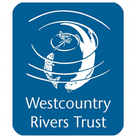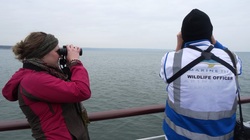 Rachel and Rick wildlife spotting
Rachel and Rick wildlife spotting I was interested to know what Rachel thought of the proposed discards ban. As a punter, when you learn that so much fresh fish is thrown back – because it’s too small and has little chance of surviving – banning discards seems a no brainer. But Boat Stories has been listening to the fishermen’s point of view. They have to buy quota. Any fish, they can’t return to the sea, becomes part of that precious quota. If fish are too small to sell commercially they’ll be turned into fishmeal and fishermen will earn less for their catch - pushing what is already a perilous business for small fishermen even closer to the tipping point. Rachel said thoughtfully, “any ban will need to be phased in slowly, to give the seabirds a chance to adapt.” Meanwhile we were keeping our eyes peeled out for Rachel’s gannets. Follow them as they fold their wings and plunge into the ocean and the chances are that dolphins may be after the same schools of fish.
The cloud hung, heavy and grey, but Rick and Rachel both laughed when I grumbled. “It makes it easier to spot fins,” said Rick, “you’re not constantly screwing up your eyes against the glare. And with no whitecaps these are perfect conditions.” Rick proceeded to tell me he’d seen minke whale on this crossing so I decided to put the pressure on. Luckily for Rick a passenger shouted, “We’ve seen a fin”. Rick rushed over and identified the triangular fin as a harbour porpoise. Needless to say I missed it!
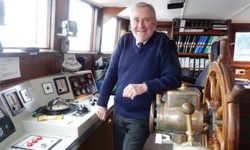 Captain Jerry on the bridge
Captain Jerry on the bridge 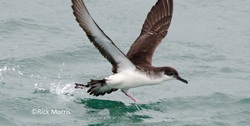 manx shearwater by RIck Morris
manx shearwater by RIck Morris | The day I sailed on the Oldenburg, she was barely half full. Now is the time to go –while the wildlife is frantically busy, but the tourist season hasn’t quite got going. Information on booking on our boat trips page. | Rick is looking for more volunteers to act as wildlife officers on the Oldenburg. You receive full training and thanks to the Landmark Trust your passage is free. And you have the rest of the day to look around Lundy. If you need ideas about what to do on Lundy – blog coming soon. Meanwhile contact Rick for information on volunteering [email protected] . |

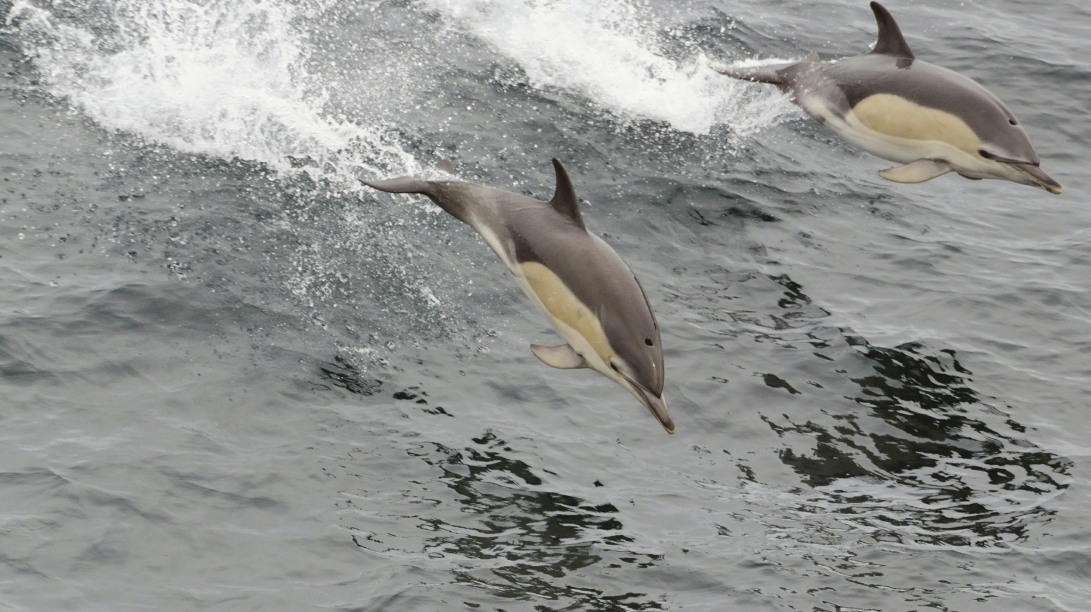
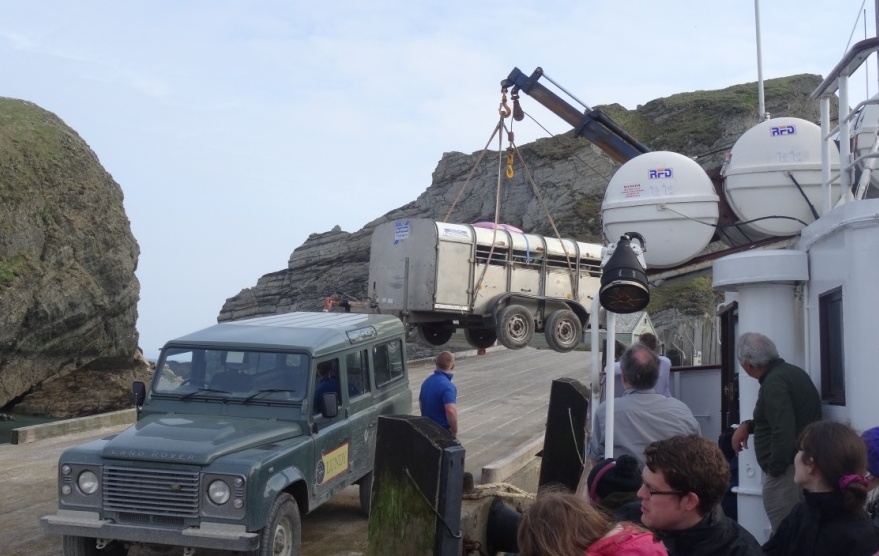

 RSS Feed
RSS Feed










